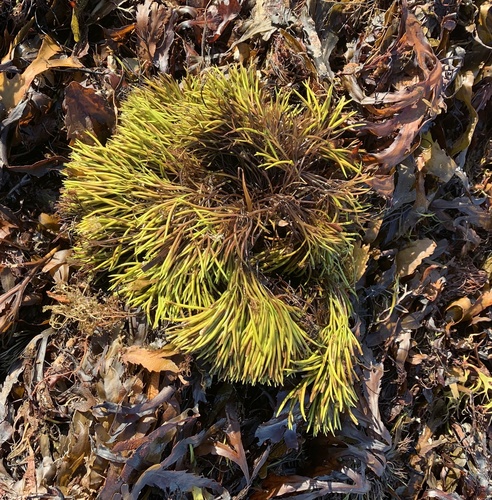
Furcellaria lumbricalis
Algae
Furcellaria lumbricalis (Black,Carrageen, Clawed Weed) is a red alga. despite ranging in color from dark brown to almost black. It grows from a tough, fibrous holdfast, which can divide vegetatively. The axis is stalk-like, and branches at acute angles. The branches are of roughly equal length, and tapered at the tips, giving the plant a fan-shaped appearance. It grows on rocks, often sand-covered, in tidepools and shallow subtidal to 28 m depth. Furcellaria lumbricalis occurs from Norway, Svalbard, and the White Sea, south to Portugal, Spain, and the western Mediterranean Sea, This alga is tolerant of brackish water, and occurs in the Baltic as far as the Gulf of Finland. In 1853, it was collected in Newfoundland by W. H. Harvey, and is found from Labrador to the Atlantic coast of Nova Scotia. There are two scattered records from Connecticut (1861) and Rhode Island (1965) in the Macroalgal Herbarium Portal, but this seaweed does not seem to be established in US waters. In Canada's Maritime Provinces, it is abundant enough in some locations to be harvested for carrageenan, a polysaccharide widely used in food processing.